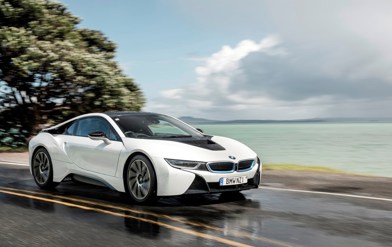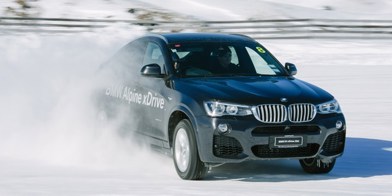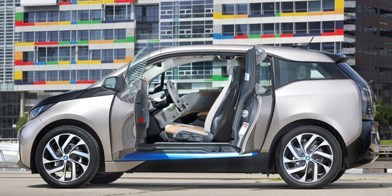GARAGE THAT GREAT WALL. IT MIGHT BE A COLLECTABLE IN YEARS TO COME
It seems absurd to suggest something like a mid-2000s Jaguar or Suzuki Swift Sport might one day end up a cherished artefact on a car club display stand, admired and nodded sagely at by elderly Gen Xers and Ys as they reminisce about their formative years behind the wheel.
But then, no one in 1966 would have assumed a lowly Austin Mini or Ford Anglia would one day be capable of drawing a crowd either.
So which utilitarian cars of recent times would we tip for future collectable status? Here are five suggestions you should possibly be reserving space in your garage for now, before inflation, obscurity and collecting trends sees zeros added to their value. Some might surprise you ...
Holden Commodore SS-V Redline
The Commodore is dead. Long live the Commodore. As the end draws nearer for the big Aussies, we can assume only there will be a run of special editions designed to appeal to teary-eyed V8 fans.
But the best Commodore is already on sale. It’s the VF Series II SS-V Redline and it’s everything a Commodore should be.
It features the sublime 304kW 6.2-litre LS3 V8, a BiModal exhaust system, FE3 sports suspension, Brembo performance brakes behind tasty 19-inch alloys, all the techno-accessories you could hope for (including MyLink infotainment system, Heads-Up Display and keyless start), leather-trimmed sports bucket seats and a Bose Premium Audio system.
You can even opt for a manual transmission. And because this is a keeper and you don’t need to worry about re-sale (not in the contemporary market anyway), don’t go for the auto because you feel you have to.
As we turn with increasing rapidity towards plug-in electric vehicles, this will prove an effective old-school enthusiast statement with a suitably raucous soundtrack to match. The Commodore SS-V Redline will be sure to turn heads and start conversations at any one of the four service stations still dispensing petrol in 2036.
Suzuki Swift Sport
 Suzuki Swift Sport.
Suzuki Swift Sport.
Could the Suzuki Swift Sport one day reach Mini Clubman 1275GT-levels of devotion among fans? Maybe. Maybe not. But taking that example into account, you have to agree that mass market ubiquity is no barrier to future collectability.
The Swift Sport is everywhere and — a bit like the original Mini — it appeals to all as well. You’re as likely to see a bright yellow one being driven by a 20-year old Unitec student as you are Babyboomers off collecting antiques in Matakana.
It’s a fun, well-packaged, adequately powered wee thing that — especially when fitted with a manual gearbox — delivers an old-school driving experience. It’s a hot hatch without actually being a hot hatch; you can wring its neck while staying well below the posted legal speed limit. It feels fast and, well, sporty. But your six-foot tall grandsons will also enjoy plenty of headroom in the back.
Solid contemporary sales figures and an apparently endless supply of careful owners should ensure an active Swift Sport car club scene in decades to come as the original model increases in age.
Lexus IS F
 Lexus IS F
Lexus IS F
On the surface, a Lexus sedan might appear to have all the collectable worth of unusually shaped root vegetables. But the IS F is different; its relative obscurity will one day make it a sought-after model from what turned out to be a cul-de-sac along the Lexus development highway.
Part of the model’s second generation update, the IS F sedan was the first Lexus to wear the F badge — the carmaker’s performance division signifier — which makes it interesting with a small ‘i’.
But the fact that it was produced only for a handful of years following its 2007 debut and replaced by — huh? — a sports coupe will in future years make it capital-I-Interesting.
The IS F was Lexus’ first effort at injecting some much needed aggression into the range. It featured a sweetly tuned 5.0-litre V8 (the blueprint for which is still in active service today in other F models) which could rocket the rear-wheel drive sedan from 0-100km/h in 4.6 seconds.
It was also fitted with an eight-speed automatic transmission; the first octo-cog box from a mainstream carmaker.
The IS F represented the brawnier, muscular side of Lexus’ psyche (remember this arrived well before the LFA supercar). But it was discontinued before the current third-generation IS range arrived, to be replaced by the RC F V8 coupe of 2014.
Slim sales figures here, when new, mean nabbing one now, post-depreciation hit, will ensure an interesting slice of Japanese performance car history in your garage in a couple of decades.
Jaguar XJ R
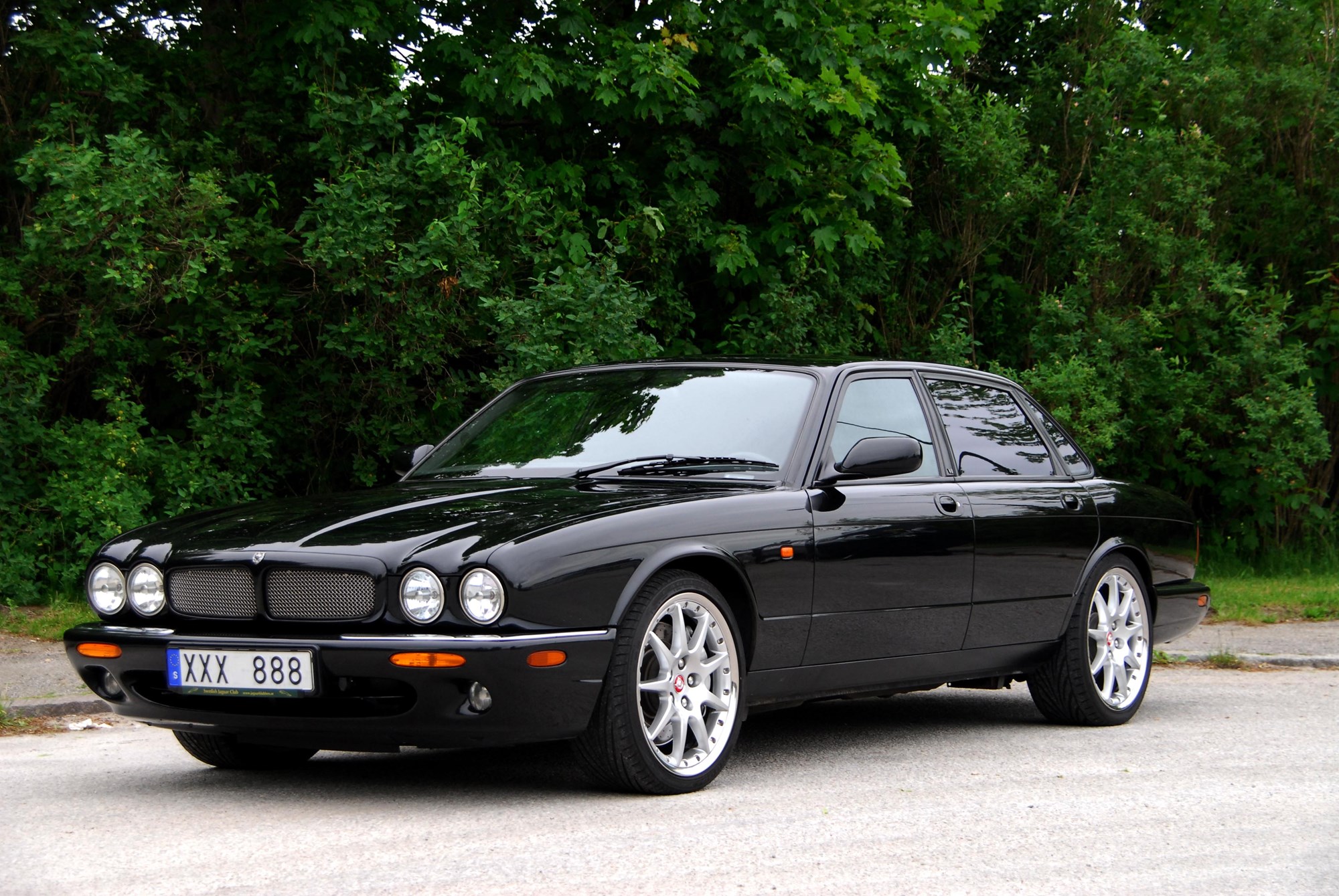 Jaguar XJR
Jaguar XJR
From the days when a Jag was a Jaaaaaaag comes the last great “old shape” XJ with a suitably rowdy engine under its long, sculptured bonnet and the all-important ‘R’ attached to its nameplate.
There’s no denying the current XJ sedan is a real head-turner.
Released in 2009 it caused quite a stir, departing from a design blueprint which stretched back (with varying modifications) to the 1960s. The tail lights on the 2009-era XJ alone were enough to have toffs spluttering tea and toast all over their newspapers.
Before all that though, the last remnants of the pre-Tata Group-owned Jaguar pulled out all the stops and created an exceptionally pretty — and appropriately powerful — XJR.
Known as the X350 shape, the XJR featured a 4.2-litre supercharged V8, a new six-speed automatic “J-gate” gearbox (no clever-clogs rotary dial here) and self-levelling air suspension.
The XJR even had wondrous new developments like four-zone air conditioning and Jaguar Voice Control.
Will all that trick stuff work in 20 years? Well ... Look don’t worry about that, just focus on the beautiful burble of the V8 and the lovely fluted lines of that long bonnet.
Great Wall V240 Single Cab
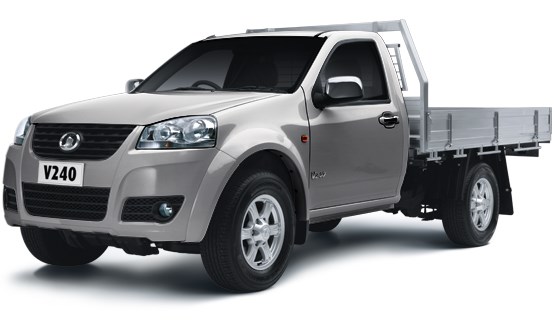 The Great Wall V240.
The Great Wall V240.
Um, sorry ... what? A low-spec single cab version of an early ANCAP-worrying Chinese-built ute a future classic?
Think about it. In 20 years the roads will be full of Chinese-built cars, all just as efficient, reliable and well-thought out as anything else on sale. And just as boring, too, no doubt.
The really interesting Chinese cars will be the survivors from the dawn of the nation’s automotive manufacturing export industry. Seeing a Great Wall V240 ute in 2036 would be like discovering a mint 1975 Hyundai Pony now, or an early-1980s Lada Niva that hasn’t melted in the rain. Not especially valuable cars we grant you, but they’d put a smile on your face.
And though a Great Wall ute would be unusual on the roads in decades to come, imagine adding to its rarity factor by owning a single cab version.
Double cab utes are as common today as station wagons were 20 years ago, so by opting for a single cab V240, you’re adding to the collectable cache of your Great Wall by some margin.
And while you wait for its value to skyrocket, you can fit more firewood in the back.
It’s win-win.


